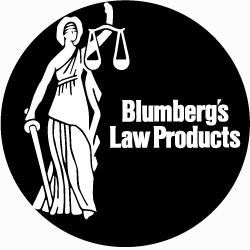
In today’s environment, business entities such as corporations or limited liability companies are no longer formed by lawyers or accountants, they are formed directly by the entrepreneurs. For this reason, it is important to understand the prudent ways of protecting valuable business documents like stock and interest certificates because, if they are lost or stolen, they may not be recoverable by the original owner and may lead to contentious disputes between owners and family members.
When you purchase shares of stock in a corporation or an interest in a limited liability company, you usually receive a physical certificate which identifies the company, the owner and the value of the share or interest. The certificates are dated and signed by an authorized officer, member or manager of the entity. Like checks, stock certificates are numbered sequentially, and those numbers are never duplicated. Only one set of originals of any stock certificate or certificates should be maintained by the entity. This prevents fraudulent issues of duplicate shares or interests in the company by others. Like a check, the same information is entered on a like-numbered stub. If lost or stolen, those numbered certificates should be voided and replaced with a newly issued certificate.
Unlike checks, entities maintain a Transfer Ledger. It is a record of certificates issued, sold, assigned or surrendered. An original issue of a certificate, the certificate number, recipient’s name, number of shares or interest and date is entered under the alphabetical listing of the shareholder or member. If a certificate is assigned to another party, it should be returned to the entity, voided and attached to the stub of the original issued certificate and a new certificate issued to the assignee.
One cannot simply tear up or discard a stock certificate and “redo” or reissue the same one. A stock certificate which is invalid, incorrect or otherwise discarded would have to be formally voided and noted on a transfer ledger to show a chain of title to the shares or interests. When a sale or transfer of an issued certificate is made, the old certificate is usually surrendered to the entity and a new certificate is issued to the new holder. The old certificate is voided and attached to the original stub in the certificate book. This not only protects against fraudulent issues of stock or interests but it would also serve to curtail any disputes among shareholders or other owners, who might receive shares that have been duplicated.
When certificates are purchased, it is best to order them bound in a booklet with a specimen certificate and interleaved with like numbered stubs. The specimen certificate will be annexed to the resolution adopting the certificates in the organizing minutes of the entity. Unbound certificates can be lost or stolen and it may be months if not years before it is discovered. It would be much easier to fraudulently issue loose certificates than ones that are properly and securely bound with sequentially numbered stubs.
While many people may opt to have business documents which include securities such as stock or membership certificates kept with the company’s attorney or accountant, many others prefer to keep those documents themselves. Regardless of where business documents are kept, it is wise to purchase bound books of certificates customized with the name of the entity, state of organization, capitalization or type of LLC interest, signing officers’ titles and sequentially numbered. Blank certificates are prone to error and fraudulent issues and look less professional. Having been in this business for generations, Blumberg provides professionally printed certificates and transfer ledgers to maintain proper chains of title of the certificates.


